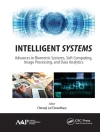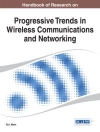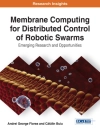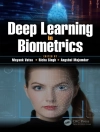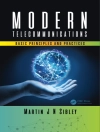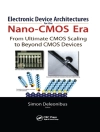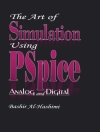OFDM-based Broadband Wireless Networks covers the latest
technological advances in digital broadcasting, wireless LAN, and
mobile networks to achieve high spectral efficiency, and to meet
peak requirements for multimedia traffic. The book emphasizes the
OFDM modem, air-interface, medium access-control (MAC), radio link
protocols, and radio network planning.
An Instructor Support FTP site is available from the Wiley
editorial department.
表中的内容
Preface.
1. Introduction.
1.1 OFDM-based wireless network overview.
1.1.1 Digital broadcasting and DVB-T.
1.1.2 Wireless LAN and IEEE 802.11.
1.1.3 Wi MAX and IEEE 802.16.
1.2 The need for ‘cross-layer’ design.
1.3 Organization of this text.
2. OFDM Fundamentals.
2.1 Broadband radio channel characteristics.
2.1.1 Envelope fading.
2.1.2 Time dispersive channel.
2.1.3 Frequency dispersive channel.
2.1.4 Statistical characteristics of broadband channels.
2.2 Canonical form of broadband transmission.
2.3 OFDM realization.
2.4 Summary.
3. PHY Layer Issues – System Imperfections.
3.1 Frequency synchronization.
3.1.1 OFDM carrier offset data mode.
3.1.2 Pilot-based estimation.
3.1.3 Non-pilot based estimation..
3.2 Channel estimation.
3.2.1 Pilots for 2D OFDM channel estimation .
3.2.2 2DMMSE channel estimation.
3.2.3 Reduced complexity channel estimation.
3.3 I/Q imbalance compensation.
3.3.1 I/Q Imbalance Model.
3.3.2 Digital compensation receiver.
3.3.3 Frequency offset estimation with I/Q imbalance.
3.4 Phase noise compensation.
3.4.1 Mathematical models for phase noise.
3.4.2 CPE estimation with channel state information.
3.4.3 Time domain channel estimation in the presence of CPE.
3.4.4 CPE estimation without explicit CSI.
3.5 Summary.
4. PHY Layer Issues – Spatial Processing.
4.1 Antenna array fundamentals.
4.2 Beam forming.
4.2.1 Coherent combining.
4.2.2 Zero-forcing.
4.2.3 MMSE reception (optimum linear receiver).
4.2.4 SDMA.
4.2.5 Broadband beam forming.
4.3 MIMO channels and capacity.
4.4 Space-time coding.
4.4.1 Spatial multiplexing.
4.4.2 Orthogonal space-time block coding.
4.4.3 Concatenated ST transmitter.
4.4.4 Beam forming with ST coding.
4.4.5 ST beam forming in OFDM.
4.5 Wide-area MIMO beam forming.
4.5.1 Data model.
4.5.2 Uncoded OFDM design criterion.
4.5.3 Coded OFDM design criterion.
4.6 Summary.
4.7 Appendix I: Derivation of Pe.
4.8 Appendix II: Proof of Proposition 5.
4.9 Appendix III: Proof of Proposition 6.
5. Multiple Access Control Protocols.
5.1 Introduction.
5.2 Basic MAC protocols.
5.2.1 Contention based protocols.
5.2.2 Non-contention based MAC protocols.
5.3 OFDMA advantages.
5.4 Multiuser diversity.
5.5 OFDMA optimality.
5.5.1 Multiuser multicarrier SISO systems.
5.5.2 Multiuser multicarrier MIMO systems.
5.6 Summary.
5.7 Appendix I: Cn(p) is a convex function in OFDMA/SISO case.
5.8 Appendix II: C(p) is a convex function in OFDMA/MIMO case.
6. OFDMA Design Considerations.
6.1 Cross layer design introduction.
6.2 Mobility-dependent OFDMA traffic channels.
6.2.1 OFDMA traffic channel.
6.2.2 System model.
6.2.3 Channel configuration for fixed/portable applications.
6.2.4 Channel configuration for mobile application.
6.3 IEEE 802.16e traffic channels.
6.4 Summary.
7. Frequency Planning in Multi-cell Networks.
7.1 Introduction.
7.1.1 Fixed channel allocation.
7.1.2 Dynamic channel allocation.
7.2 OFDMA DCA.
7.2.1 Protocol design.
7.2.2 Problem formulation for the RNC.
7.2.3 Problem formulation for BSs.
7.2.4 Fast algorithm for the RNC.
7.2.5 Fast algorithm for BSs.
7.3 Spectrum efficiency under different cell/sector configurations.
7.3.1 System configuration and signaling overhead.
7.3.2 Channel loading gains.
7.4 Summary.
8. Appendix..
8.1 IEEE 802.11 and Wi Fi.
8.1.1 802.11 overview.
8.1.2 802.11 network architecture.
8.1.3 The MAC layer technologies.
8.1.4 The physical layer technologies.
8.2 IEEE 802.16e and Mobile Wi MAX.
8.2.1 Overview.
8.2.2 The physical layer technologies.
8.2.3 The MAC layer technologies.
8.3 Performance analysis of Wi MAX systems.
8.3.1 Wi MAX OFDMA-TDD.
8.3.2 Comparison Method.
Notations and Acronym.
About the Authors.
Index.
关于作者
HUI LIU, Ph D, is Associate Professor in the Electrical
Engineering Department at the University of Washington. Dr. Liu has
published more than forty journal articles and holds eighteen
awarded or pending patents. He founded Broadstorm Inc. in 2000 and
developed the world’s first OFDMA-based mobile broadband system. He
is the author of Signal Processing Applications in CDMA
Communications and is the General Chairman for the 2005 Asilomar
Conference on Signals, Systems, and Computers.
GUOQING LI, Ph D, is a Research Scientist in the
Communication Technology Lab of Intel, where she works on broadband
wireless technologies. Previously, Dr. Li worked as a senior system
engineer at UTStarcom, developing algorithms for physical, multiple
access control, radio link control, and radio resource control
layers for 3G-WCDMA and IS-95 networks. Dr. Li has published more
than twenty journal articles and conference papers.


